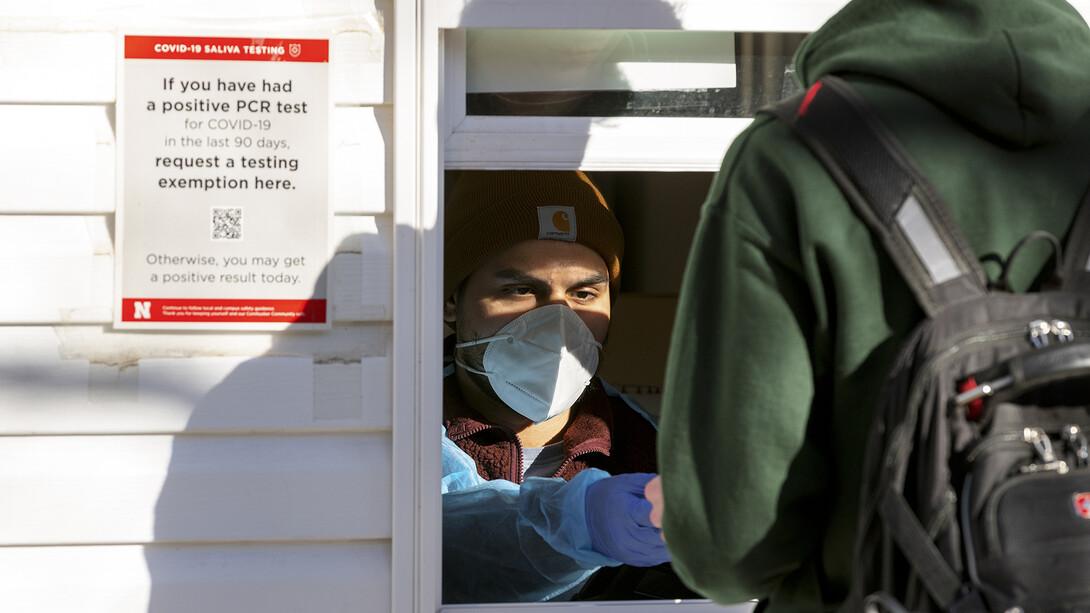
To get a better understanding of virus trends on campus, the University of Nebraska–Lincoln is temporarily shifting COVID-19 screening to all students living in on-campus congregate housing.
Between Jan. 23-28, the updated protocol will test every student living in residence halls, fraternities and sororities. The focused screening is driven by data gathered during the university’s two-week re-entry testing period, as well as how easy the Omicron variant spreads, particularly within populations living in close quarters. The testing strategy has been developed in partnership with the Lincoln-Lancaster County Health Department.
Students who must test will be notified via email. Testing is available by appointment through the Safer Community app and COVID-19 Testing Portal, or via drop-in at a testing site.
As of Jan. 18, nearly 21,500 tests had been completed through the university’s re-entry period (which started Jan. 9 and continues through Jan. 21). The positivity rate of the entire campus community is 10.3%. The rate for students in congregate, on-campus housing is slightly above the average at 11.4%.
The university’s saliva-based COVID-19 testing program remains open to all students, faculty and staff who are symptomatic or for those exposed to the virus. Per Centers for Disease Control guidance, it is best to get tested five days after exposure or as soon as symptoms occur.
University leaders plan to transition to a random-mitigation testing model when it becomes possible for the remainder of the spring semester. Details about further changes to campus screening for COVID-19 will continue to be announced.
Learn more about the university’s ongoing response to the global pandemic.
Editor’s Note — This story was updated to reflect the testing window for the focused testing of students in residence halls and Greek houses. The testing timeline is Jan. 23-28. Testing will not be available on Jan. 29.







